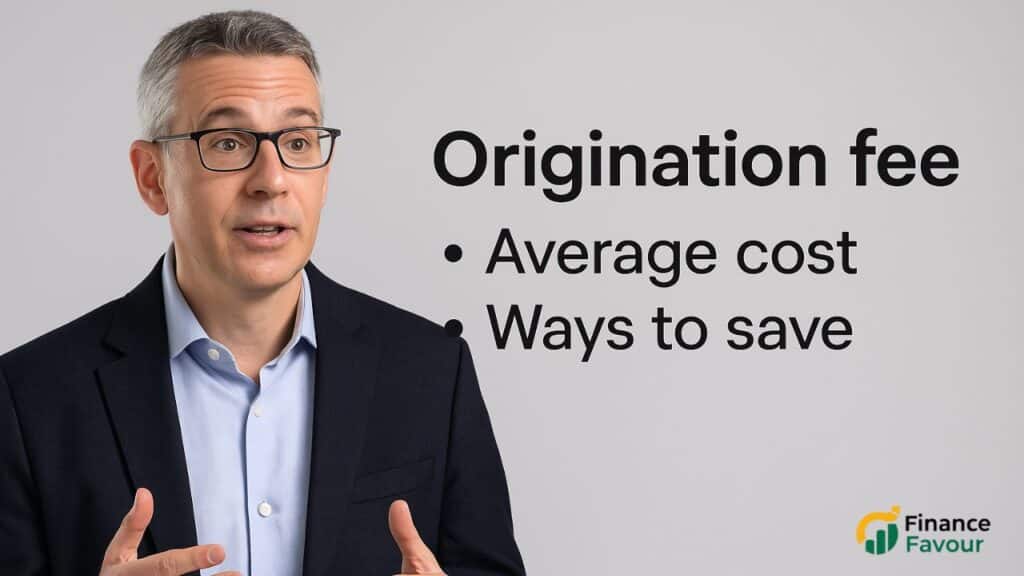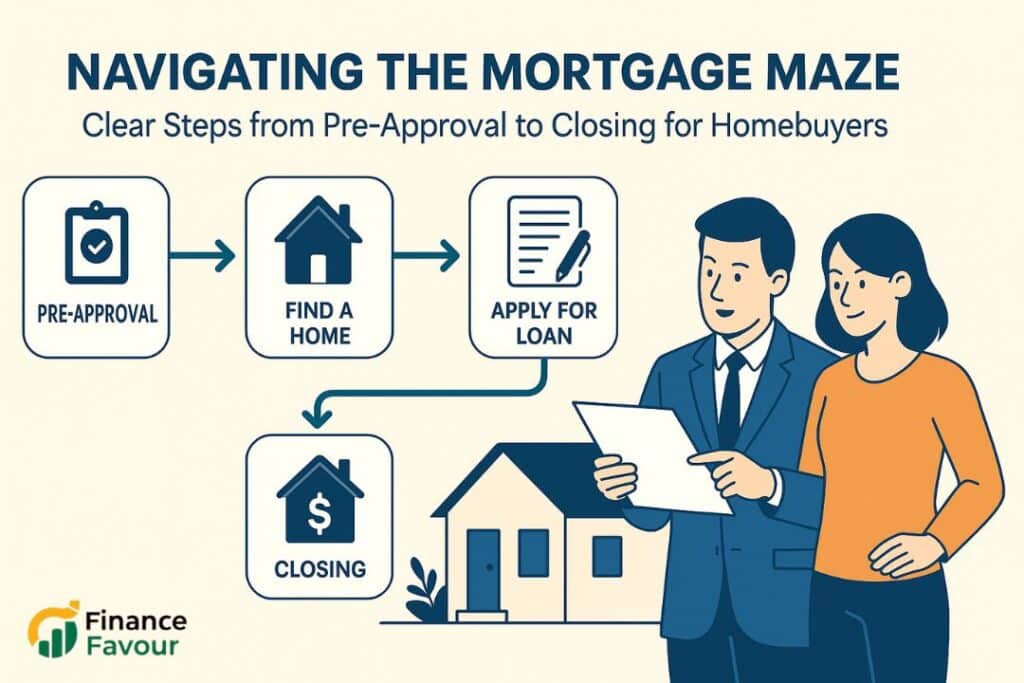Introduction
When it comes to real estate investing, financing is often the trickiest piece of the puzzle. Traditional mortgages come with a laundry list of documentation, income verification, and red tape. But what if you could skip all that? That’s where no-ratio mortgages come in—a lesser-known but increasingly popular option for savvy property investors looking to scale without the headache.
A no-ratio mortgage isn’t a loophole or some sketchy finance hack. It’s a legitimate loan product that allows borrowers to qualify without disclosing their income. Yes, you read that right. No pay stubs, W-2s, or tax returns. Just assets, credit, and property value. Sounds too good to be true? It’s not, but there are caveats.
In this article, we’re diving deep into the world of no-ratio mortgages. We’ll look at what they are, who they’re best for, how they work, and whether they make sense for your investment strategy. If you’re a property investor looking for flexibility and speed, you’ll want to pay close attention.
Understanding No-Ratio Mortgages
So, what exactly is a no-ratio mortgage? In the simplest terms, it’s a loan where the lender does not consider your debt-to-income (DTI) ratio during the underwriting process. That’s a game-changer. Most traditional loans hinge on proving your income, calculating your DTI, and staying within tight financial parameters.
In a no-ratio mortgage, that part is skipped entirely. Instead of income, the lender focuses on other factors:
- Your credit history
- The value of the property
- Your down payment
- Asset reserves
This type of loan is particularly appealing to self-employed individuals, investors with multiple income streams, and high-net-worth borrowers who prefer not to disclose their financial details.
Unlike “no-doc” or “stated income” loans of the past—which were largely responsible for the 2008 financial crisis—today’s no-ratio mortgages are more controlled and offered by reputable lenders who focus on asset strength over income proof.
It’s not that these loans are riskier—it’s that they evaluate risk differently.
Key Benefits of No-Ratio Mortgages
So why would an investor choose a no-ratio mortgage over a traditional one? Simple—freedom and speed. Here’s a closer look at the benefits:
1. Minimal Documentation
One of the biggest hurdles in getting a conventional mortgage is the mountain of paperwork. From tax returns to employer verification, it’s exhaustive. No-ratio mortgages streamline this by eliminating the income portion altogether.
2. Greater Privacy
High-net-worth individuals or self-employed entrepreneurs often prefer financial discretion. No-ratio mortgages allow you to keep your income confidential, focusing instead on your assets and the investment potential of the property.
3. Faster Closing
Fewer documents mean faster processing. Investors working in hot markets where speed is everything find this invaluable. You could close in weeks rather than months.
4. Flexibility in Qualification
If you write off a lot of business expenses or have non-traditional income streams, a no-ratio loan can help you qualify where traditional methods fail. It levels the playing field for investors with complex finances.
5. Useful for Scaling
If you’re growing a portfolio, traditional lenders may cap your loan count. No-ratio lenders are often more open to multiple property deals, especially if you’ve got strong assets and good credit.
These benefits make no-ratio mortgages a strategic choice, especially for those with cash reserves and good property sense but without a “clean” income story.
Who Should Consider a No-Ratio Mortgage?
No-ratio mortgages aren’t for everyone. They’re tailored for a specific type of borrower—one who may not have easily verifiable income but still holds strong financial footing in other areas. So, who exactly fits that bill?
1. Real Estate Investors with Multiple Properties
Traditional lenders often become skittish when borrowers already have several mortgages under their name. No-ratio mortgages provide an alternative route for seasoned investors who are expanding portfolios and don’t want to jump through income hoops for every property.
2. Self-Employed Borrowers
Freelancers, consultants, small business owners—these individuals often struggle to “prove” income in the traditional sense. No-ratio loans don’t penalize them for complicated income structures. As long as they can meet other criteria (like a high credit score and solid assets), they’re good candidates.
3. Retirees with Strong Assets
Plenty of retirees live comfortably off investments or passive income but don’t show a high monthly income on paper. No-ratio mortgages let them leverage their wealth without worrying about proving a paycheck.
4. High-Net-Worth Individuals Seeking Privacy
Some borrowers simply don’t want to share financials—especially those who value privacy or are in sensitive industries. No-ratio mortgages eliminate the need for disclosing tax returns or income documents.
5. Foreign Nationals
International investors often lack U.S.-based income records, making it hard to qualify for standard loans. No-ratio options give them a pathway to invest in U.S. property markets without the typical roadblocks.
If you fall into one of these categories and have a solid down payment, good credit, and a profitable property on hand, a no-ratio mortgage might be your ticket to faster, less intrusive financing.
How No-Ratio Mortgages Work
While these loans are simplified in some ways, they still follow a structured process—just without income verification.
Application Process
You start by choosing a lender who offers no-ratio loans. Instead of focusing on your income, they’ll examine:
- Your credit score
- Down payment size
- Asset statements (to confirm reserves)
- Property appraisal
Once the lender is satisfied with those elements, they’ll move into underwriting, which is usually faster than a traditional loan since fewer documents are involved.
What Lenders Use Instead of Income
With no DTI ratio to calculate, lenders focus on:
- Creditworthiness: Scores of 680+ are generally required, though 720+ is preferred.
- Equity position: Most lenders want at least 20-30% down. The more equity you have, the safer they feel.
- Property cash flow: For investment properties, they may still want to see rental income potential. Not to calculate your personal DTI, but to ensure the property isn’t a cash sink.
Reserve Requirements
Some lenders will require that you have a certain number of months’ worth of mortgage payments in reserve—usually between 6 to 12 months. These reserves act as a safety net in case you hit a rough patch.
Property Types Allowed
Most no-ratio mortgages are designed for:
- Rental properties
- Second homes
- Multi-family units
- Short-term rentals
Primary residences may be allowed but are less common due to regulatory concerns.
Common Requirements and Qualifications
While you don’t need to provide income, that doesn’t mean just anyone can qualify. No-ratio mortgages have specific requirements to mitigate risk for the lender.
1. Strong Credit Score
Most lenders look for a credit score of at least 680. The higher your score, the better your interest rate. A score of 720+ can open doors to premium terms.
2. Large Down Payment
Expect to put down 20–30%, depending on the lender and property type. The logic is simple: more skin in the game means less risk for the lender.
3. Solid Asset Reserves
You’ll need proof of savings, investments, or other liquid assets. Lenders typically want to see enough cash to cover 6–12 months of mortgage payments.
4. Clean Title and Property Condition
The property must be appraised and clear all typical inspection hurdles. No-ratio doesn’t mean no rules. Lenders still want to avoid distressed or risky properties.
5. Experience (Optional but Helpful)
Some lenders prefer or require that you have previous experience managing rental properties, especially if you’re buying a multi-unit or short-term rental.
These requirements might sound stiff, but they actually open the door for many borrowers shut out by traditional underwriting—especially if they’re asset-rich but income-light.
Risks and Downsides to Consider
As with any financial product, no-ratio mortgages come with trade-offs. Understanding the potential pitfalls is crucial before jumping in.
1. Higher Interest Rates
Because lenders are taking on more risk by not verifying income, they often charge higher interest rates. You might pay 1–2% more than a conventional mortgage. Over the life of the loan, that adds up.
2. Limited Availability
Not all lenders offer no-ratio mortgages. You’ll likely need to work with specialized lenders or mortgage brokers familiar with non-traditional financing. This can limit your options and negotiation power.
3. Larger Down Payment Requirement
The flexibility comes at a cost—usually in the form of a higher upfront investment. If you’re hoping to buy with 5–10% down, this loan isn’t for you.
4. Lower Loan-to-Value (LTV) Ratios
You may not be able to borrow as much against the property value. This can limit your ability to scale quickly or reduce the amount of leverage you’re using in a deal.
5. Regulatory Risk
Because of their non-conforming nature, no-ratio loans are more susceptible to changes in lending regulations. If new rules tighten the market, these products could disappear or become even more restrictive.
Being aware of these downsides ensures you go into the loan with eyes wide open and a strategy that protects your bottom line.
No-Ratio vs Low-Doc and No-Doc Loans
It’s easy to confuse no-ratio mortgages with other non-traditional loan types like low-doc and no-doc loans. While they all aim to make financing easier for people with complex income situations, they’re not the same. Understanding the differences helps you choose the best option for your situation.
1. No-Ratio Mortgages
- What’s excluded: No income verification or DTI calculation.
- What’s required: Good credit, large down payment, strong assets.
- Who it’s for: Investors or borrowers with assets but limited or unprovable income.
2. Low-Doc Loans
- What’s excluded: Less documentation than traditional loans, but some income info still required.
- What’s required: Usually a business bank statement, letter from an accountant, or partial income disclosure.
- Who it’s for: Self-employed borrowers with some income documentation.
3. No-Doc Loans
- What’s excluded: No income or asset verification (very rare today).
- What’s required: Often just a credit score and a large down payment.
- Who it’s for: Extremely limited market; mainly private money or hard money scenarios.
Which Should You Choose?
- Choose no-ratio if you have strong credit and assets but want privacy.
- Choose low-doc if you can provide partial income info but want to skip full tax return scrutiny.
- No-doc loans are often riskier and come with higher costs—use only as a last resort.
By understanding these distinctions, you can align your financing approach with your broader investment goals.
Popular Use Cases for No-Ratio Mortgages
No-ratio mortgages are not just a financial hack—they’re a strategic tool used by smart investors to grow their real estate portfolios. Here are a few scenarios where these loans shine.
1. Short-Term Rental Investments
Platforms like Airbnb and Vrbo have changed the game. Investors who operate vacation rentals often have inconsistent income that traditional lenders don’t understand. No-ratio loans allow them to buy, refinance, or scale without proving income stability.
2. Multi-Unit Property Acquisitions
Buying duplexes, triplexes, or small apartment buildings? The income from these properties might not show on your tax returns yet, especially if they’re new purchases. A no-ratio loan lets you qualify based on credit and down payment instead.
3. Flipping Houses
House flippers don’t earn steady income in the traditional sense. They rely on lump-sum profits. No-ratio mortgages help fund flips without needing to justify income on paper. Some investors even use them for refinancing after a rehab.
4. Diversifying Portfolios
Want to invest in a different market or asset class? A no-ratio loan provides the flexibility to make bold moves without waiting to clean up your tax returns or build new W-2 history.
5. Streamlining Repeat Transactions
If you’re closing multiple deals a year, re-submitting income docs for every one is a drag. No-ratio loans allow experienced investors to move fast and reduce paperwork fatigue.
Whether you’re a side hustler with one rental or a full-time investor with 20 doors, these loans provide efficiency, privacy, and leverage.
Impact on Real Estate Investment Strategies
The way you finance your properties can dramatically affect your investment strategy. No-ratio mortgages are particularly valuable tools for shaping aggressive, scalable approaches.
1. Long-Term Buy-and-Hold
If you’re in this for the long haul, holding properties for cash flow and appreciation, no-ratio loans allow you to continue acquiring without being held back by income limits or DTI caps. That means:
- Faster portfolio growth
- Easier cash-out refinancing
- Greater leverage over time
2. Short-Term Flipping
For flippers, speed is everything. No-ratio loans help you close faster, fund renovations, and refinance once the property is improved. Since you’re not showing steady income, this model aligns well with your revenue stream.
3. Value-Add Investing
Buying distressed or underperforming properties and turning them around? No-ratio mortgages give you the initial capital to buy in, especially if the property isn’t generating income yet—something traditional lenders often require.
4. Geographic Diversification
Expanding to new cities or states? No-ratio loans free you from local lending restrictions and give you national flexibility—provided you work with a lender that operates across multiple markets.
Bottom line: these loans align with dynamic strategies. If your investing style demands speed, flexibility, and minimal red tape, no-ratio financing deserves a place in your toolkit.
Real-Life Examples of No-Ratio Mortgage Success
Let’s take a look at how no-ratio mortgages play out in real-world scenarios.
Case Study 1: The Passive Investor
Maria, a marketing executive with high net worth but inconsistent freelance income, wanted to diversify into real estate. Her W-2 income didn’t reflect her true financial situation. She secured a no-ratio mortgage for a duplex with 30% down and a 720 credit score. Within a year, the rental income covered her mortgage, and she refinanced into a lower-rate product once the property stabilized.
Takeaway: Maria leveraged assets over income and scaled passively.
Case Study 2: The Active Flipper
Jason flips 8–10 houses a year. Traditional lenders declined him because he didn’t have regular income. Using no-ratio loans, he secured funding for three properties simultaneously, used his cash reserves for renovations, and sold all three within six months.
Takeaway: No-ratio mortgages allowed him to operate at scale without income verification delays.
These stories show that with the right strategy and financial positioning, no-ratio mortgages can unlock doors that traditional financing slams shut.
Conclusion
No-ratio mortgages are more than just an alternative—they’re a strategic edge for property investors who don’t fit the conventional financing mold. In a world where traditional lenders demand rigid income documentation, these flexible loan products offer breathing room, privacy, and agility. They’re not without risks—higher interest rates, stricter credit requirements, and a limited pool of lenders—but for the right borrower, the benefits can far outweigh the downsides.
If you’re a real estate investor looking to scale your portfolio, move fast in competitive markets, or maintain financial privacy, a no-ratio mortgage could be your ticket to the next level. Just be sure you go in prepared: strong credit, a healthy down payment, and asset reserves are your key tools.
Like any investment decision, financing should align with your overall strategy. If your game is speed, leverage, and scalability—without the income documentation drag—then no-ratio mortgages just might be your smartest move yet.
Check this post How to Get a Mortgage Without a Social Security Number
FAQs
No-ratio loans exclude income verification but still require assets, credit checks, and appraisals. No-doc loans skip nearly all verification and are much rarer, often used only in niche or private money scenarios.
Yes, they are legal, but their availability depends on lenders operating in your state. Regulatory environments may impact underwriting standards or accessibility.
Focus on maintaining a high credit score, building substantial asset reserves, and offering a large down payment (20–30%). Clean up your financial history and be ready with appraisals or rental projections.
No, but some lenders may want to verify potential cash flow to assess property viability. This doesn’t affect your DTI but may influence loan terms or approval.
They can be, but they are more commonly used for investment properties. Primary residence rules are stricter due to consumer protection regulations, so availability is limited.




